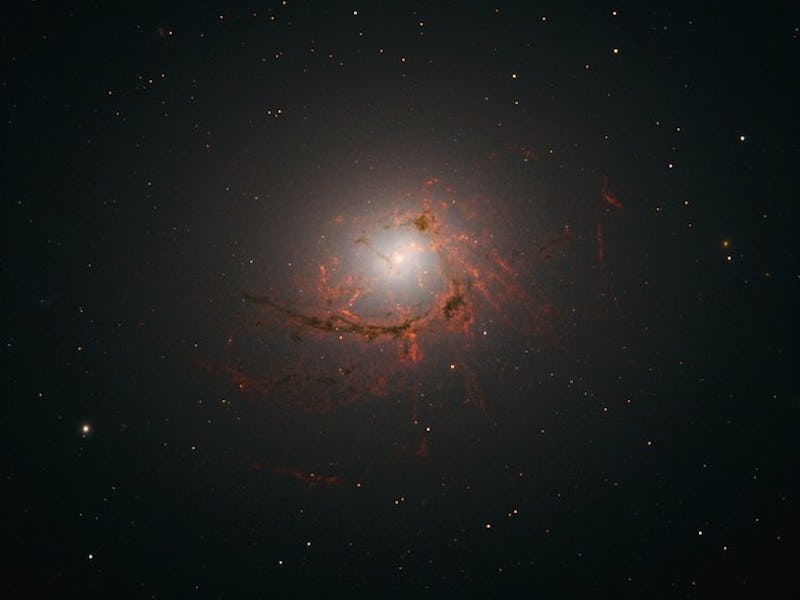Hubble Spies Distant Black Hole Voraciously Eating Host Galaxy

The Hubble Space Telescope just snapped an image of cosmic crime in process: a supermassive black hole slowly consuming its host galaxy.
This supermassive black hole is lurking in the heart of an elliptical galaxy known as NGC 4696, which is the largest galaxy in the massive Centaurus galaxy cluster about 150 million light-years from Earth. The new observations from Hubble reveal that the supermassive black hole at its center of NGC 4696 has shaped the otherwise typical elliptical galaxy into a cosmic question mark.
Black holes are well known as cosmic monsters, with centers of gravity so dense they gobble up anything that crosses their path. On the plus side, these stellar behemoths tend to be messy eaters, which often results in beautiful works of cosmic art.
The new images reveal spectacular bands of curling filaments, which are composed of dusty ionized hydrogen, spiraling out into interstellar space. Data collected shows that the supermassive black hole is responsible for the dusty tendrils and thread-like filaments we see. Like brush strokes on a cosmic painting, the black hole is painting the cosmos with material from its host.
A view of NGC 4696, the largest galaxy in the Centaurus Cluster.
New research also suggests that the galaxy’s own supermassive black hole is also preventing the galaxy from creating new stars — meaning the galaxy is essentially dead. With no new stars being formed, once the black hole has consumed all of the surrounding galactic material, NGC 4696’s lights will go out forever.